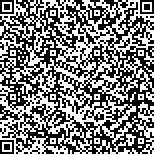下载中心
优秀审稿专家
优秀论文
相关链接
摘要

针对红外掩星载荷的分层探测特性,本文在Rodgers提出的LM(Levenberg-Marquardt)最优估计算法的基础上进行修改,构建一种适合掩星探测的水汽廓线反演算法。首先,考虑到红外掩星的高光谱数据在反演时存在通道信息冗余的问题,相关的干扰成分信息对反演精度也有严重影响。使用通道选择和敏感性分析选择合适的反演通道,从而减轻计算负担并提高反演效率。其次,采用分层平滑因子修正Rodgers的LM最优估计算法,使算法更适合红外掩星载荷的分层探测特性。最后,为了验证修正算法的可靠性,分别对ACE-FTS观测数据和GF-5AIUS模拟光谱数据进行水汽廓线反演,并对同次迭代的反演结果进行对比。结果表明:对于ACE-FTS观测数据,修正后算法的反演总体相对偏差从±10%降低到±6%;对于GF-5 AIUS模拟光谱数据,修正后算法的反演总体相对偏差从±9%降低到±5%。此外,在部分高度层中相对偏差明显减小,对于ACE-FTS的反演实验,在不同高度层中修正后算法减小的相对偏差百分比超过25.17%;对于GF-5 AIUS反演实验,不同高度层减小的相对偏差百分比超过48.26%,表明修正后的算法使反演效果得到了改善,证实了该算法的有效性。因此,本文提出的算法可以为今后掩星探测水汽廓线的研究提供参考,为预测降雨、天气灾害、维持全球生态平衡等领域的研究提供高质量的水汽基础数据。
The spatiotemporal distribution of water vapor has impact on precipitation state prediction, climatic disasters, and global ecological equilibrium. And the satellite-based occultation observations greatly improve the understanding of atmospheric vertical composition. This study proposed a modified water vapor retrieval algorithm.There has been information redundancy when retrieving with hyper-spectral remote sensing data of infrared occultation. The interference components will also greatly decline retrieval accuracy. Considering these problems, the Reference Forward Model (RFM) and the channels’ Jacobian were applied when choosing appropriate retrieval channels. 159 retrieval channels which include 13 micro-windows were extracted by using channel selection and sensitivity analysis. This will lessen calculative burden and improve retrieval efficiency. The hierarchical smoothing parameter, which makes the algorithm suitable for the layered detection characteristic of infrared occultation payload, was employed to modify the Rodgers’s Levenberg—Marquardt (LM) optimal estimation algorithm. Thus, smoothing coefficients at different altitudes were used when retrieving water vapor profiles based on infrared occultation data. To validate the reliability of the modified algorithm, the original and modified algorithms were used for the water vapor profiles retrieval based on the ACE-FTS observation data. The retrieval experiment based on GF5-AIUS simulation data was performed for the further validation of the modified algorithm applicability to the domestic occultation satellite payload. By comparing the overall differences and the relative differences at different altitudes of original and modified algorithms under the same number of iteration, the conclusion can be obtained.The result showed that the modified algorithm reduced the overall relative differences of retrieval from ±10% to ±6% for the ACE-FTS observation data. For the GF5-AIUS simulation data, it was from ±9% to ±5%. In addition, the relative differences was also significantly reduced in some atmospheric layers. The decrease of relative differences in different altitudes were more than 25.17% for the ACE-FTS observation data and more than 48.26% for the GF5-AIUS simulation data. The overall decrease of relative difference for the three-scene (Orbit numbers 40993, 43544, 38154) data were 34.7362%, 25.1706%, and 52.1346% for the ACE-FTS observation data. For the GF5-AIUS simulation data, they were 61.3239%, 48.2558%, and 51.9857%, respectively.In conclusion, the modified algorithm works efficiently and reliably in retrieving atmospheric water vapor profiles based on infrared occultation. Therefore, the modified algorithm provides a reference for the water vapor profile retrieval study when using infrared occultation data and is conducive to the further research in atmospheric water vapor retrieval of domestic occultation payload. It provides reliable fundamental data for water vapor for climate change prediction, global ecological balance, and other relevant fields.

